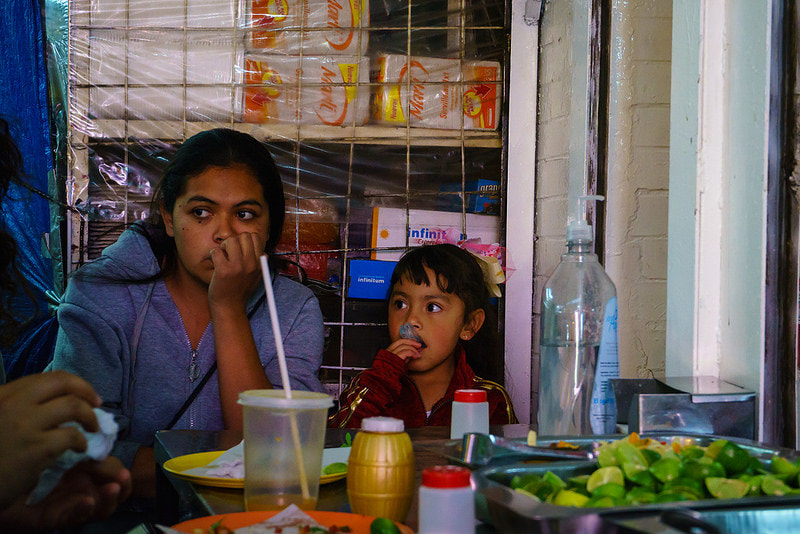This page is dedicated to the work of Arlene Goldbard
The Culture of Possibility: This title alone opens doors, and Arlene Goldbard offers more on every page. By showing us that culture is the crucible in which we forge our laws and our government as well as our values and families, she restores our power as unique individuals and as creative communities. The idea that all change comes from the top is the propaganda of those who wish it were true. This book encourages us to take back our power through unique and communal creativity. —Gloria Steinem |
Reclaiming the Republic of Stories
Reclaiming the qualitative and storied side of life in a culture
obsessed with information, measurement and metrics.*
What we need, |
Metrics can be a valuable tool for analysis, but an obsession with metrics becomes an obstacle to community and creativity...The Metrics Syndrome is a manifestation of what the philosopher Friedrich Hayek sixty-odd years ago termed “scientism.” Scientism means taking methods and ways of thinking that work very well in the physical sciences and misapplying them to highly complex human endeavors,where they don’t work at all. If you can arrive at solid truth about the behavior of minerals or fluids by weighing and measuring them, this thinking goes, you should also be able to reduce social systems or circumstances to quantitative data, and this should enable you to understand and intervene in them with equal success. As Hayek and others have pointed out, this is a huge and deeply unscientific mistake. Unlike working with a box of rocks, it is only possible to obtain quantifiable data on a few aspects of human events or situations. Researchers can devise tests and grading systems, tabulate how much time or money is spent in a certain endeavor, or even stretch to the kind of absurdity one state agency achieved in establishing a scale of “artist-client contact hours. In the domain of cultural development, the data thus obtained will always be limited, and almost never reveal the most important aspects of whatever is being studied. and a conceptual mistake.The Metrics Syndrome is a manifestation of what the philosopher Friedrich Hayek sixty-oddyears ago termed “scientism.” Scientism means taking methods and ways of thinking that work very well in the physical sciences and misapplying them to highly complex human endeavors,where they don’t work at all. If you can arrive at solid truth about the behavior of minerals or fluids by weighing and measuring them, this thinking goes, you should also be able to reduce social systems or circumstances to quantitative data, and this should enable you to understand and intervene in them with equal success. As Hayek and others have pointed out, this is a huge and deeply unscientific mistake. Unlike working with a box of rocks, it is only possible to obtain quantifiable data on a few aspects of human events or situations. Researchers can devise tests and grading systems, tabulate how much time or money is spent in a certain endeavor, or even stretch to the kind of absurdity one state agency achieved in establishing a scale of “artist-client contact hours. In the domain of cultural development, the data thus obtained will always be limited, and almost never reveal the most important aspects of whatever is being studied. It forgets the fluid nature of knowledge.
It neglects the open future.When it comes to community cultural development, the Metrics Syndrome also has another fatal, intrinsic flaw: it is based on the idea that factors can be derived from past experience, isolated and applied to future actions in such a way that success is guaranteed. But one terrible byproduct of scientism is that it generates theories with absolutely no predictive power. How is it possible to force creative vitality into being? We have only to look at planned communities where the Metrics Syndrome shaped development to see that two and two don’t make community cultural development. Consider the instant villages where prefab shopping districts and common areas attempt to mimic the fabric of organic village life in the hope of reproducing organic cultural vitality. Want to live there? It neglects relationships and feelings.Everyone who works on the ground in communities knows that all kinds of unquantifiable factors affect the quality and worth of the experience: feelings, ideas, relationships, beliefs and more. In the quest for metrics, such things are dismissed or devalued precisely because they can’t be adequately demonstrated by quantitative measurement. Before long, the idea takes hold that only the factors that can be quantified are relevant and the rest—indeed, the heart and soul of the work—is just some soft stuff that has to be scraped away to get at the facts. It neglects indeterminacy and vagueness.Whitehead is a philosopher for whom vagueness is a reality, as his category of transmutation witnesses. This may seem strange from the philosopher who has necessitated one ultimate category, eight categories of existence, twenty seven categories of explanation, and nine categoreal obligations. Nevertheless, these categories are designed to accommodate (among other things) the real potentiality, the real indeterminacy, the real incompleteness, the real inherent creativity, the real relativity, the real inexactitude, the real and vague perception of causal efficacy, the real inextricable antecedents that are involved in any actual occasion. “The problem is to discriminate exactly what we know vaguely.” Thus, it is Whitehead who says” “My point is that the final outlook of philosophic thought cannot be based on the exact statements which form the basis of special sciences. The exactness is a fake.” Then Whitehead’s own exactness and precision in formulating his own philosophical system is, in part, exactness about how actuality is inexact and indeterminate and precision in stating how actualities are imprecise and vague. It is Whitehead who reminds us that: “It follows that philosophy is not a science.” In sum Whiteheadian reality including Whiteheadian time is inexact since real concrete existences are inexact experiences. Actualities have not the exactitude of ideas. It neglects the ultimacy of creativity.Creativity is the universal of universals characterizing ultimate matter of fact. It is that ultimate principle by which the many, which are the universe disjunctively, become the one actual occasion, which is the universe conjunctively. It lies in the nature of things that the many enter into complex unity. It is spiritually immature.There is no need to get rid of metrics. There are aspects of reality which are quantifiable and the very act of quantification can play a constructive role in life, not only in the professions but in daily life. We need to count things, to calculate, to design things, to develop algorithms, to compute, to manufacture. Moreover, mathematics has a special kind of beauty, akin to poetry, which adds joy to life. The problem lies in an obsession with metrics. It is immature. The need is to grow up. What to do? Here are some possibilities:Embrace multiple forms of intelligence.In the spirit of Howard Gardner (Hobbs Professor of Cognition and Education, Harvard Graduate School of Education), it can help to recognize multiple forms of intelligence: verbal-linguistic, mathematical-logical, visual-spatial, bodily-kinesthetic, musical-rhythmic, empathic, introspective, naturalistic, and spiritual. Recognize that the various forms are blended within the life of a single human being and that each form has value relative to different contexts. Support arts education and science education.One purpose of the arts is to help us hear the stories of others. As Arlene Goldbard points out, practicing the arts can foster empathy, imagination, and a capacity for being present to the world in creative and constructive ways. See her Three Habits of the Heart and Mind to Spark Cultural Awakening. And studying art can do the same. See the video by Meg Boyles on Crystal Bridges Museum and the Dazzling Effect. In the current climate education in the sciences has a higher status than education in the arts. They should have equal status. Adopt a more organic view of the universe.The obsession with matrics is based on an epistemology of control and a metaphysics of the machine. While there is nothing wrong with machines -- and lots that is right about them -- even machines need to be rethought in light of a larger and more organic vision of reality. A vision in which all things are understood as alive and moving into an open future, connected to one another and yet independent of one another, and filled with value for themselves, for one another, and for the larger whole. Whitehead's philosophy of organism is one excellent example of such a relational metaphysics. There are others, too. Maximize the possibility of happy accidents.When we work with people in communities, one accurate way to describe what we are trying to do is to maximize the possibility of positive accidents. If those believing the right metrics can make things happen their way can be compared to builders, measuring out lumber and pounding nails to construct something to their exact specifications, community artists can be compared to farmers: preparing the soil, adding food and water, placing the seeds in their earthy nests, then letting the sun, air and microscopic life forms do their miraculous thing. Our hope is to help create the conditions, the environment in which people’s creativity can flourish and grow, each according to his or her own nature. This can never be quantified. Get over perfectionism.A preoccupation with metrics is a symptom, not only of a desire for inordinate control, but also for a type of perfectionism that cannot handle failure and mistakes: the "imperfections" in life. And yet these imperfections are typically a font for creativity and growth. Patricia Adams Farmer's article in JJB makes a strong case for the Beauty of Imperfection. Everything is not about, and does not need to be about, efficiency. There is a constructive place in life for inefficiency, error, and the freedom to fail. Make peace with vagueness.Vagueness is part of the essence of the universe. Hopes and dreams, loves and hatreds, desires and satisfactions, fears and longings -- these are part of the essence of the universe, too. They are not containable in simple formulas. They emerge out of open-ended relationships, the boundaries of which are indistinct. Even the hills and rivers, even the molecules and atoms, are filled with open-ended relationships. The wisdom of science is to discern the mathematical patterns within the relationships, and there is a beauty to what is discovered. Science is a kind of poetry in its own right. But it is not the only kind of poetry. The beauty of the imprecise and the vague has a value of its own. The spiritually mature soul has made her peace with vagueness. Welcome the republic of stories."We are in the midst of seismic cultural change. In the old paradigm, priorities are shaped by a mechanistic worldview that privileges whatever can be numbered, measured, and weighed; human beings are pressured to adapt to the terms set by their own creations. Macroeconomics, geopolitics, and capital are glorified. They form the foreground of the world depicted by powerful institutions: banks, militaries, energy corporations, major news media. People are expected to make sacrifices for profit-margin, to go to war for oil, to accept environmental damage that threatens future generations—and often, to do all this for no palpable reward beyond “improved economic indicators.” Within the old paradigm how we feel, how we connect, how we spend our time, how we make our way and come to know each other—these are all part of the scenery. |
* in appreciation of the work of Arlene Goldbard, the philosophy of AN Whitehead,
and the spiritual alphabet developed by Frederic and Mary Ann Brussat
and the spiritual alphabet developed by Frederic and Mary Ann Brussat

































